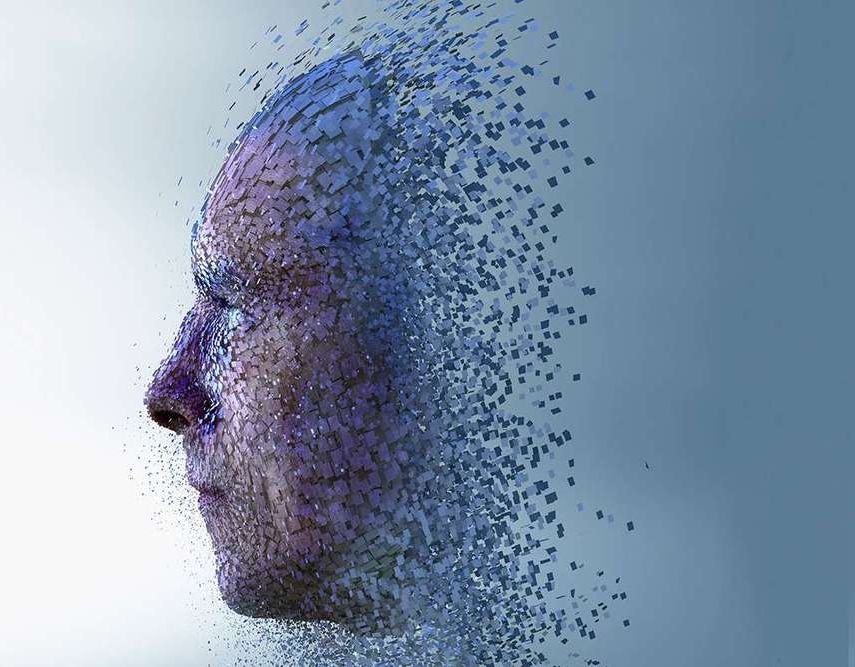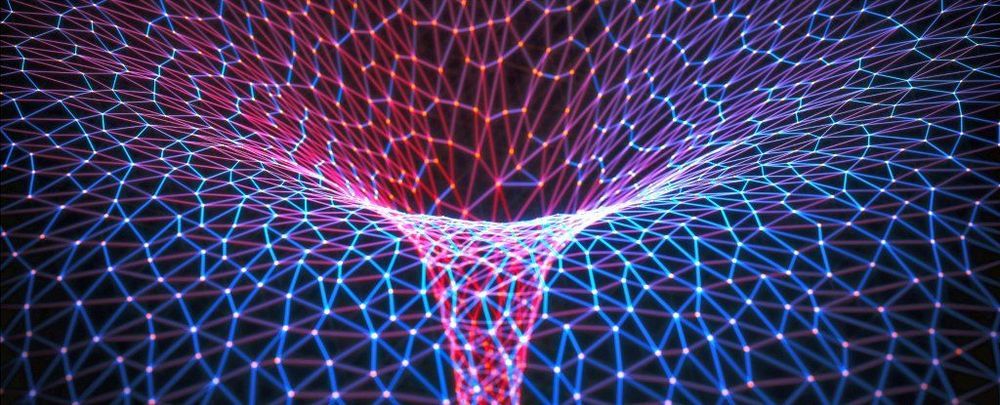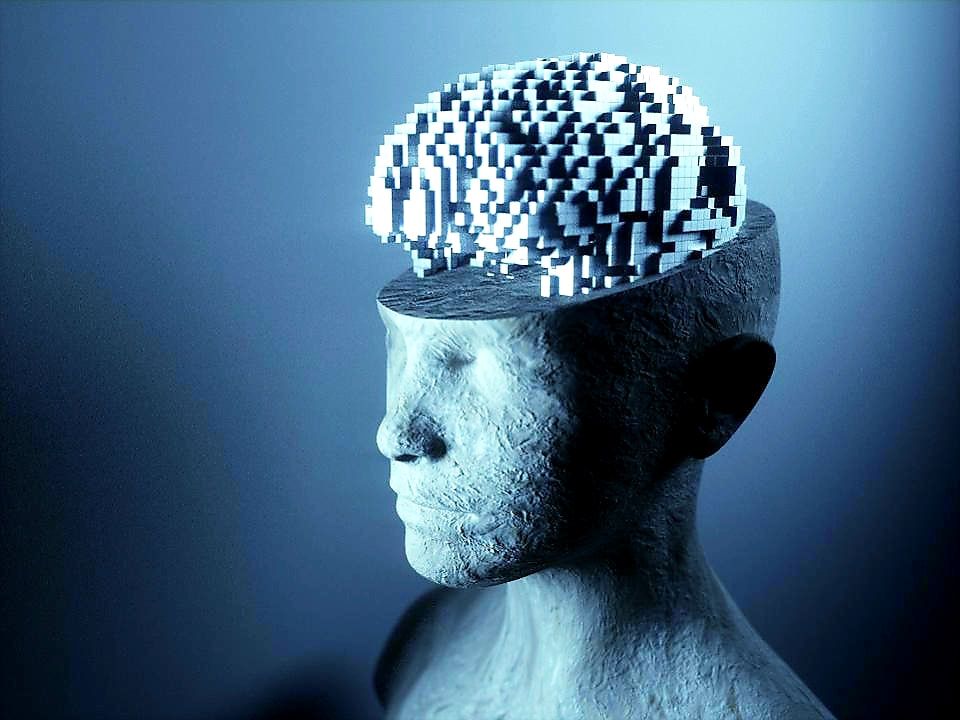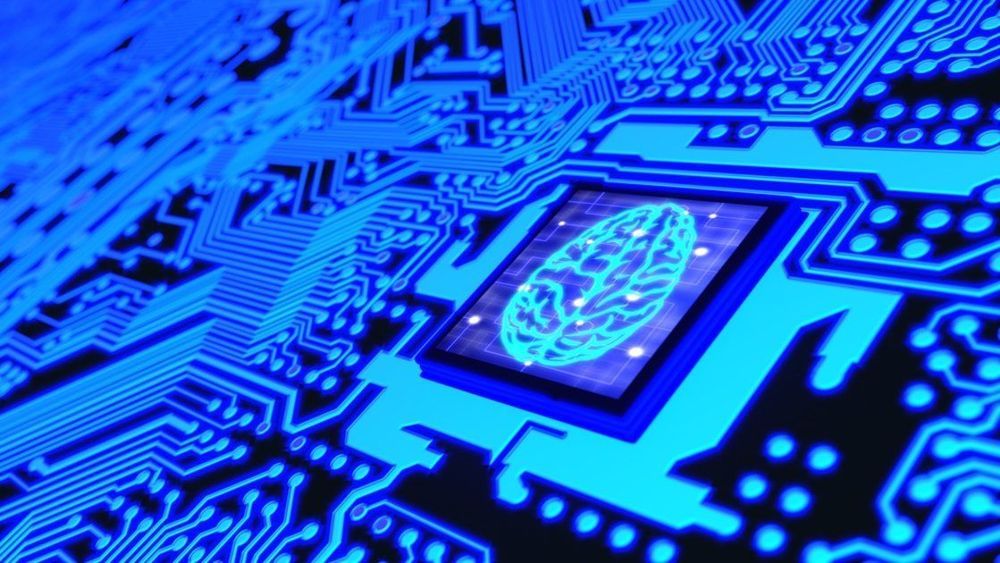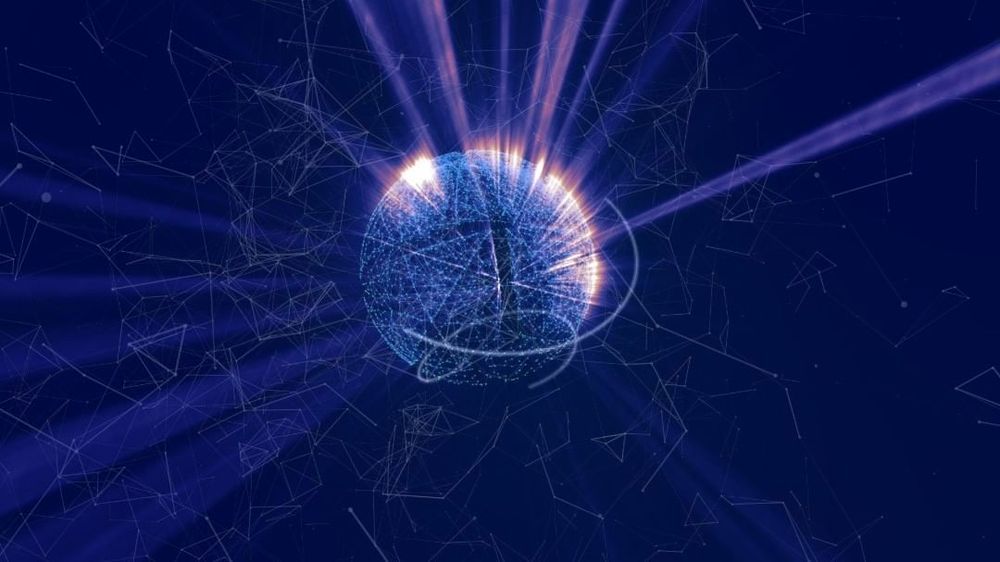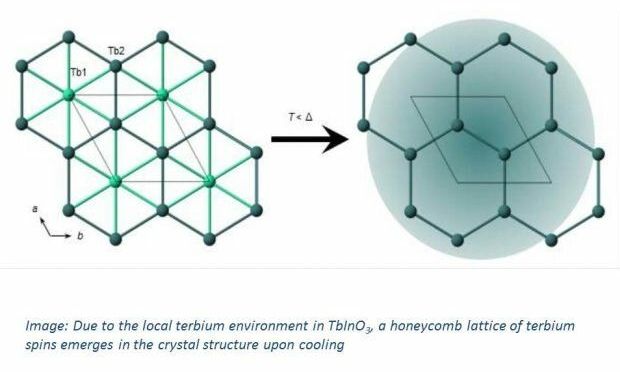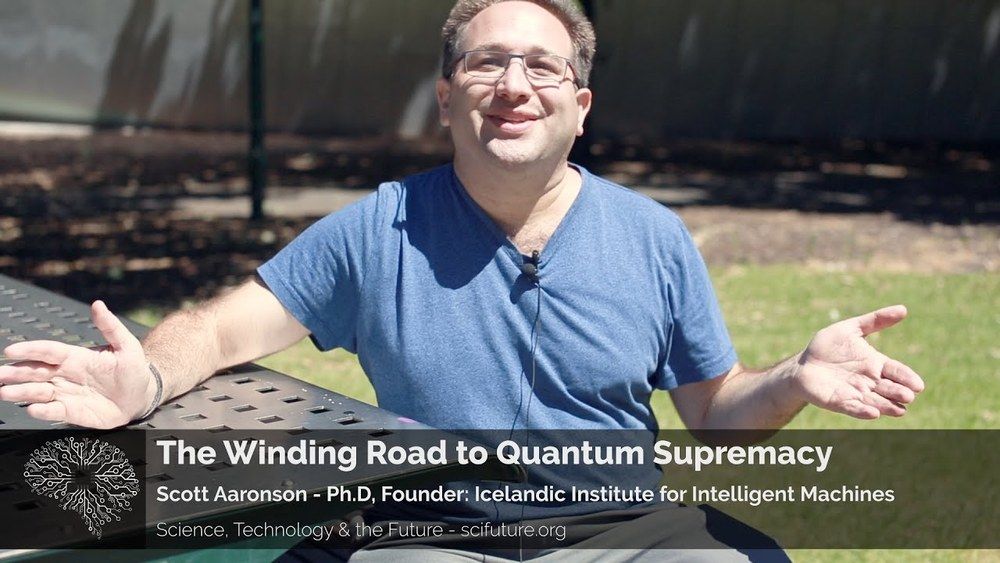One of the most powerful techniques in machine learning, generative adversarial networks, has been tested on a quantum computer for the first time.
Category: quantum physics – Page 745
Quantum physics just beat classical physics again.
A single quantum particle can send a two-way signal, scientists have discovered — something that’s impossible in classical physics. That means a particle can essentially send messages to itself thanks to the whacky state of uncertainty known as superposition.
Superposition states that one particle can occupy two positions at once, and that’s how the two-way communication happens.
In May, 2016 I stumbled upon a highly controversial Aeon article titled “The Empty Brain: Your brain does not process information, retrieve knowledge or store memories. In short: your brain is not a computer” by psychologist Rob Epstein. This article attested to me once again just how wide the range of professional opinions may be when it comes to brain and mind in general. Unsurprisingly, the article drew an outrage from the reading audience. I myself disagree with the author on most fronts but one thing, I actually agree with him is that yes, our brains are not “digital computers.” They are, rather, neural networks where each neuron might function sort of like a quantum computer. The author has never offered his version of what human brains are like, but only criticized IT metaphors in his article. It’s my impression, that at the time of writing the psychologist hadn’t even come across such terms as neuromorphic computing, quantum computing, cognitive computing, deep learning, evolutionary computing, computational neuroscience, deep neural networks, and alike. All these IT concepts clearly indicate that today’s AI research and computer science derive their inspiration from human brain information processing — notably neuromorphic neural networks aspiring to incorporate quantum computing into AI cognitive architecture. Deep neural networks learn by doing just children.
By Alex Vikoulov.
“I have always been convinced that the only way to get artificial intelligence to work is to do the computation in a way similar to the human brain. That is the goal I have been pursuing. We are making progress, though we still have lots to learn about how the brain actually works.”
The human brain has amazing capabilities making it in many ways more powerful than the world’s most advanced computers. So it’s not surprising that engineers have long been trying to copy it. Today, artificial neural networks inspired by the structure of the brain are used to tackle some of the most difficult problems in artificial intelligence (AI). But this approach typically involves building software so information is processed in a similar way to the brain, rather than creating hardware that mimics neurons.
My colleagues and I instead hope to build the first dedicated neural network computer, using the latest “quantum” technology rather than AI software. By combining these two branches of computing, we hope to produce a breakthrough which leads to AI that operates at unprecedented speed, automatically making very complex decisions in a very short time.
We need much more advanced AI if we want it to help us create things like truly autonomous self-driving cars and systems for accurately managing the traffic flow of an entire city in real-time. Many attempts to build this kind of software involve writing code that mimics the way neurons in the human brain work and combining many of these artificial neurons into a network. Each neuron mimics a decision-making process by taking a number of input signals and processing them to give an output corresponding to either “yes” or “no”.
An old thought experiment now appears in a new light. In 1935 Erwin Schrödinger formulated a thought experiment designed to capture the paradoxical nature of quantum physics. A group of researchers led by Gerhard Rempe, Director of the Department of Quantum Dynamics at the Max Planck Institute of Quantum Optics, has now realized an optical version of Schrödinger’s thought experiment in the laboratory. In this instance, pulses of laser light play the role of the cat. The insights gained from the project open up new prospects for enhanced control of optical states, that can in the future be used for quantum communications.
Aeronautics giant Airbus today announced that it is creating a global competition to encourage developers to find ways quantum computing can be applied to aircraft design.
Quantum computing is one of many next-generation computing architectures being explored as engineers worry that traditional computing is reaching its physical limits.
Computers today process information using bits, either 0s or 1s, stored in electrical circuits made up of transistors. Quantum computers harness the power of quantum systems, such as atoms that can simultaneously exist in multiple states and can be used as “quantum bits” or “qubits.” These can theoretically handle far more complex calculations.
Why it is dangerous to build ever larger big bang machines
Posted in alien life, astronomy, cosmology, energy, engineering, ethics, existential risks, general relativity, governance, gravity, innovation, law, nuclear energy, nuclear weapons, particle physics, philosophy, physics, policy, quantum physics, science, scientific freedom, security, singularity, space travel, supercomputing, theory, time travel | 1 Comment on Why it is dangerous to build ever larger big bang machines
CERN has revealed plans for a gigantic successor of the giant atom smasher LHC, the biggest machine ever built. Particle physicists will never stop to ask for ever larger big bang machines. But where are the limits for the ordinary society concerning costs and existential risks?

CERN boffins are already conducting a mega experiment at the LHC, a 27km circular particle collider, at the cost of several billion Euros to study conditions of matter as it existed fractions of a second after the big bang and to find the smallest particle possible – but the question is how could they ever know? Now, they pretend to be a little bit upset because they could not find any particles beyond the standard model, which means something they would not expect. To achieve that, particle physicists would like to build an even larger “Future Circular Collider” (FCC) near Geneva, where CERN enjoys extraterritorial status, with a ring of 100km – for about 24 billion Euros.
Experts point out that this research could be as limitless as the universe itself. The UK’s former Chief Scientific Advisor, Prof Sir David King told BBC: “We have to draw a line somewhere otherwise we end up with a collider that is so large that it goes around the equator. And if it doesn’t end there perhaps there will be a request for one that goes to the Moon and back.”
“There
This was the first part in an interview series with Scott Aaronson — this one is on quantum computing — other segments are on Existential Risk, consciousness (including Scott’s thoughts on IIT) and thoughts on whether the universe is discrete or continuous.
First part in an interview series with Scott Aaronson — this one is on quantum computing — future segments will be on Existential Risk, consciousness (including Scott’s thoughts on IIT) and thoughts on whether the universe is discrete or continuous.
See ‘Complexity-Theoretic Foundations of Quantum Supremacy Experiments’
https://www.scottaaronson.com/papers/quantumsupre.pdf
Bio : Scott Aaronson is a theoretical computer scientist and David J. Bruton Jr. Centennial Professor of Computer Science at the University of Texas at Austin. His primary areas of research are quantum computing and computational complexity theory.
He blogs at Shtetl-Optimized: https://www.scottaaronson.com/blog/
Interview with Scott Aaronson — covering whether quantum computers could have subjective experience, whether information is physical and what might be important for consciousness — he touches on classic philosophical conundrums and the observation that while people want to be thorough-going materialists, unlike traditional computers brain-states are not obviously copyable. Aaronson wrote about this his paper ‘The Ghost in the Quantum Turing Machine’ (found here https://arxiv.org/abs/1306.0159). Scott also critiques Tononi’s integrated information theory (IIT).
Scott discusses whether quantum computers could have subjective experience, whether information is physical and what might be important for consciousness — he touches on classic philosophical conundrums and the observation that while people want to be thorough-going materialists, unlike traditional computers brain-states are not obviously copyable. Aaronson wrote about this his paper ‘The Ghost in the Quantum Turing Machine’ (found here https://arxiv.org/abs/1306.0159). Scott also critiques Tononi’s integrated information theory (IIT).
Questions include:
- In “Could a Quantum Computer Have Subjective Experience?” you speculate that a process has to ‘fully participate in the arrow of time’ to be conscious, and this points to decoherence. If pressed, how might you try to formalize this?
- In “Is ‘information is physical’ contentful?” you note that if a system crosses the Schwarzschild bound it collapses into a black hole. Do you think this could be used to put an upper bound on the ‘amount’ of consciousness in any given physical system?
- One of your core objections to IIT is that it produces blatantly counter-intuitive results. But to what degree should we expect intuition to be a guide for phenomenological experience in evolutionarily novel contexts? I.e., Eric Schwitzgebel notes “Common sense is incoherent in matters of metaphysics. There’s no way to develop an ambitious, broad-ranging, self- consistent metaphysical system without doing serious violence to common sense somewhere. It’s just impossible. Since common sense is an inconsistent system, you can’t respect it all. Every metaphysician will have to violate it somewhere.”
